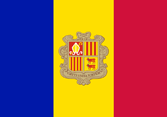Today we will be taking a look at a tiny nation up in the Pyrenees Mountains between Spain and France; I am of course talking about Andorra. This beautiful and friendly nation is one of three principalities in Europe and the whole world; the other two being Monaco and Liechtenstein.
Curiously, what do all three have in common? That’s right. They are all offshore jurisdictions.
History
 History books on Andorra are very thin. Although old as a sovereignty, very little noteworthy has happened in Andorra. The locals know this and consider a part of their heritage. Keeping a low profile and keeping to themselves is the Andorran way of life.
History books on Andorra are very thin. Although old as a sovereignty, very little noteworthy has happened in Andorra. The locals know this and consider a part of their heritage. Keeping a low profile and keeping to themselves is the Andorran way of life.
Born from the remnants of buffer states, collectively called Marca Hispanica, set up by Charlemagne to keep the Moors at bay, Andorra’s history begins somewhere in the 9th century.
In the year 1278, rule over Andorra was divided between a French count and a Spanish bishop. This is maintained to this day, although the rule is now shared between the same Spanish bishop but the French president rather than a count.
France briefly invaded Andorra in the 1930s, following civil unrest after a Russian nobleman tried to proclaim himself the prince of Andorra.
During World War II, Andorra remained neutral but acted as a smuggling route between Spain and France.
As a sign of Andorra’s low international profile, it did not declare peace with Germany until 1958. For World War I, due to an oversight in the Treaty of Versaille.
In 1993, Andorra enacted a new constitution which greatly reduced the powers of the two co-princes (the Spanish bishop and French president). Civil rights were greatly extended.
Andorra is today one of Europe’s most prosperous nations, with an economy that relies largely on tourism (skiing) and financial services.
Overview Data
[ws_table id=”6″] [google-map-v3 width=”100%” height=”250″ zoom=”4″ maptype=”roadmap” mapalign=”center” directionhint=”false” language=”default” poweredby=”false” maptypecontrol=”true” pancontrol=”true” zoomcontrol=”true” scalecontrol=”true” streetviewcontrol=”true” scrollwheelcontrol=”false” draggable=”true” tiltfourtyfive=”false” addmarkermashupbubble=”false” addmarkermashupbubble=”false” addmarkerlist=”42 30 N, 1 31 E{}1-default.png” bubbleautopan=”false” showbike=”false” showtraffic=”false” showpanoramio=”false”]Andorra Incorporation
Andorran companies enjoy low tax rates but it is generally speaking not a popular incorporation jurisdiction since it requires at least one resident director and the costs are higher than most other jurisdiction.
Andorra Offshore Banking
Banking is what Andorra is known for and rightfully so; in particular – Private Banking. Andorran banks can best be described as responsible but easy-going.
The Institut Nacional Andorrà de Finances regulates the six banks in Andorra:
- Andorra Banc Agrícol Reig, SA (Andbank)
- Crèdit Andorrà, SA
- Banc Sabadell d’Andorra, SA
- Mora Banc, SAU
- Mora Banc Grup, SA
- Banca Privada d’Andorra, SA
Crèdit Andorrà and Banca Privada d’Andorra (BPA) are the banks most commonly used by non-residents, although all banks are more or less open to non-residents.
BPA is strictly about private banking. Their sleek all-black branches are hard to miss as they contrast against the otherwise colourful buildings of the Andorran capital. A minimum deposit of 500,000 EUR is expected but they will settle for far less in some cases.
Crèdit Andorrà, listed as one of my Best Offshore Banks in 2012, is suitable both for private banking and personal, day-to-day banking. Private banking starts at 500,000 EUR but, as with BPA, it is negotiable. Crèdit Andorrà also has a branch in Panama and you can open an account in Panama from the Andorran office.
Andorran banks are well-regulated and take a conservative approach to investments. While no bank is entirely immune to insolvency, Andorran banks are among the least likely to fail.
Numbered accounts are available for private banking customers.
Though it remains strong, banking secrecy has been loosened somewhat in recent times, with Andorra signing several TIEAs. While the banking secrecy is in place, the banks have realized they need to offer more to stay competitive. This has lead to Andorran banks increasing their investment and savings offerings.
Living in Andorra
Andorrans are a non-majority in their own country, making up only 20 to 35% of the population. The rest of the population is mostly Spanish, French, and Portuguese with some other expats living there.
Getting a work permit and residence permit is easy once you have secured a job with an Andorran company. The government supplies free, high-quality courses in Catalán, a language closely related to Spanish.
Tax rates in Andorra are very low. While it currently has no personal or corporate income tax, the government is under pressure to instate some form of income tax. VAT was introduced in early 2013 at a rate of between 0 and 4.5%.
The costs of living in Andorra are moderate to high compared to the rest of western Europe.
Final Words
Andorra is highly recommended for banking and for relocation, if you are up for learning the language and enjoy mountains surrounded by stunning nature.
English works quite well for as a tourist but if you plan to live in Andorra, learning Catalán (or at least Spanish) is almost a requirement.
Be the first to comment on "Jurisdiction spotlight: The Principality of Andorra"